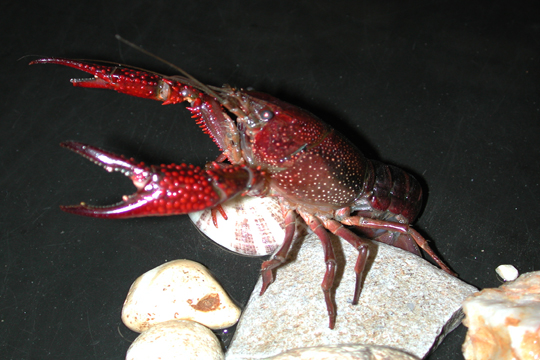Table of which
lines activate which type of neurons (PDF,
MS Word
)
Sample poster PPT
and PDF
Sample movies of
larval behavior: Hot linked so click on title.
Movies:
Sample
movies of larval behavior: (hot links with names-raw data files MP4)
(21C for 24 hours
2nd instar to 3rd instar, No ATR feeding)
Parentals
Chr2XXL-dish 1
Parentals
Chr2XXL-dish 2
Parentals
No
ATR-20C-Chr2 only no cross, 5 larvae dish 1
Parentals
ATR-20C-Chr2
only no cross, 6 larvae dish 1
F1 (The
progeny of crossing virgin females of UAS-Chr2XXL with males of D42-GAL4.)
- They all
freeze with Blue light 100%
No
ATR D42 Chr2F1-dish 1
No
ATR D42 Chr2F1-dish 2
No
ATR D42 Chr2F1-dish 3
ATR D42
Chr2F1-dish 1
ATR D42
Chr2F1-dish 2
ATR D42
Chr2F1-dish 3
F2 (flies
that emerged from F1 were crossed to each other. The original parental
strains were removed)
Without ATR
one
slowed Chr2 for a lot-F2-dish 1
one
partly slowdown-Chr2-F2-dish 2
Three
slowed down Chr2-F2-dish 3
Prior-four
slowed Chr2XXL-F2-dish 4 This movie is before the next one with blue
light
four
slowed Chr2XXL-F2-dish 4
Four-slowed
down-Chr2-F2-dish 5
two
mostly slowed chr2XXL-F2-dish 6
Three
slowed down Chr2-F2-dish 7
Three
slowed down Chr2-F2-dish 8
five
slowed down Chr2XXL-F2-dish 9
With ATR
ATR
1 of 4- F2-dish1
ATR 2
of 8-F2-dish 2
ATR 2
of 8-F2-dish 3
ATR
1 of 4 -F2-dish 4
ATR 2
of 8-F2-dish 5
Movies:
on YouTube:
Parentals
Chr2XXL-dish 1 https://youtu.be/kscigOjvtk8
Parentals Chr2XXL-dish 2 https://youtu.be/181bVjV7hwo
Parentals
No
ATR-20C-Chr2 only no cross, 5 larvae dish 1 https://youtu.be/GmyVFbbB9i0
Parentals
ATR-20C-Chr2
only no cross, 6 larvae dish 1 https://youtu.be/rFa03rk0jCk
F1 (The
progeny of crossing virgin females of UAS-Chr2XXL with males of D42-GAL4.)
- They all
freeze with Blue light 100%
No ATR D42 Chr2F1-dish
1 https://youtu.be/P_R9SuQE7k0
No ATR D42 Chr2F1-dish 2 https://youtu.be/_ynnDARNAdg
No ATR D42 Chr2F1-dish 3 https://youtu.be/DqYcxsjKgb0
ATR D42 Chr2F1-dish 1 https://youtu.be/N8csI3mRI4E
ATR D42 Chr2F1-dish 2 https://youtu.be/pXmdKIqONVQ
ATR D42 Chr2F1-dish 3 https://youtu.be/PAE4YLF-oHA
F2 (flies
that emerged from F1 were crossed to each other. The original parental
strains were removed)
(all non-ATR fed)
one slowed
Chr2 for a lot-F2-dish 1 https://youtu.be/6K10bIqQrIo
one partly slowdown-Chr2-F2-dish 2 https://youtu.be/Mc-rOWa6J2g
Three slowed down Chr2-F2-dish 3
https://youtu.be/7Xj6BsOdG0o
Prior-four slowed Chr2XXL-F2-dish 4 https://youtu.be/mvjagiVsR2A
four slowed Chr2XXL-F2-dish 4 https://youtu.be/9dTssN5VlEU
Four-slowed down-Chr2-F2-dish 5 https://youtu.be/xn6XSfceppw
two mostly slowed chr2XXL-F2-dish 6 https://youtu.be/vJJXTXHJlkM
Three slowed down Chr2-F2-dish 7 https://youtu.be/U6lU7HLM0tI
Three slowed down Chr2-F2-dish 8 https://youtu.be/TBEhmqUIuqc
five slowed down Chr2XXL-F2-dish 9 https://youtu.be/UV1UzTWVKWM
With ATR
ATR 1 of 4- F2-dish1
https://youtu.be/DwFSuFKZYpA
ATR 2 of 8-F2-dish 2 https://youtu.be/QNwUZKNGmRA
ATR 2 of 8-F2-dish 3 https://youtu.be/oeuztDAU_zQ
ATR 1 of 4 -F2-dish
4 https://youtu.be/QUXuslmGzvQ
ATR 2 of 8-F2-dish 5 https://youtu.be/rXlpEFeg7fw
Participants designing
this content are :
Jeffrey Chalfant, Department of STEM, College of Eductaion, University of Kentucky, Lexington, KY, jeffrey.chalfant@uky.edu
Robin L. Cooper, 675
Rose St., Department of Biology, University of Kentucky, Lexington, KY
40506-0225 USA, RLCOOP1 at uky.edu
Tawny Aguayo-Williams,West
Jessamine High School, 2101 Wilmore Rd, Nicholasville, KY 40356, aguayowilliams
at gmail.com
Lexie Holtzclaw,
Madison Loveless, and Jennifer Wilson at Pulaski County High School, Somerset,
KY
Doug Harrison, 675
Rose St., Department of Biology, University of Kentucky, Lexington, KY
40506-0225 USA, dough at uky.edu
|


